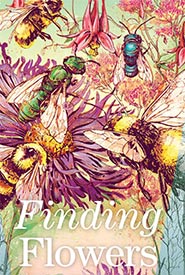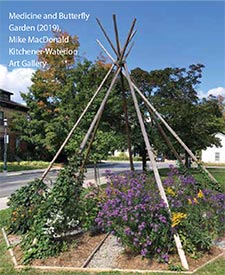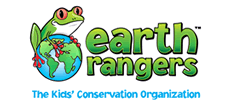Finding flowers

Illustration by Jaqui Oakley
“It was exciting at the time — my first drive-by identification, but it’s sad, as I haven’t found any since then,” says Colla, a pollinator conservation researcher at York University, in Toronto, Ontario.
Native bumble bees are rapidly declining and some are at risk of being lost from Canada. Recently, the Nature Conservancy of Canada (NCC), with funding from The W. Garfield Weston Foundation and Mitacs, supported Colla’s research into pollinator-friendly management practices in agricultural landscapes. Between 2016 and 2018, Colla’s team identified the presence of many species of native pollinators on NCC properties, including three species of bumble bees that are rapidly declining (American bumble bee, yellow-banded bumble bee and golden northern bumble bee).
“I’ve been researching native pollinators for 15 years, documenting the decline of native bumble bees in Canada and the U.S., before it was on the public’s radar,” says Colla. “Often when people talk about pollinator decline, it’s about non-native honey bees and agricultural crop pollination. According to a national poll, roughly half of Canadians believe the European honey bee is a native, wild bee in Canada. But I work with our native bees, thinking about how to conserve their biodiversity and the importance of doing so for ecosystem resilience in light of climate change.”
Colla finds it challenging to communicate the value of conserving native pollinators to the public, as it’s often hard to understand how they positively impact humans. She believes that art may be a more effective tool to convey the benefits of pollinators than a scientific paper. And this is where her collaboration with Lisa Myers, an artist and curator of Anishinaabe ancestry, takes root.
Colla and Myers are colleagues in the Faculty of Environmental Studies at York University. They’ve embarked on a unique research project — Finding Flowers — to replant the late (1941–2006) Mi’kmaq artist Mike MacDonald’s gardens across Canada. The first garden in the series is located outside the Kitchener–Waterloo Art Gallery in Ontario. This striking circular garden features seven sections and a wooden teepee overhead. The Indigenous medicine plants growing there support pollinators from spring to late fall, showcasing the connections between pollinators, traditional medicinal plants and Indigenous culture.
“[Through Finding Flowers], we hope to integrate ecological studies and Indigenous art, and gather basic ecological information about these culturally important native plants, their pollinators and what threats they encounter,” says Colla. She adds that scientists need to be open to incorporating different knowledge systems into their research and recognize that humans are part of the natural world.

Medicine and Butterfy Garden (2019) Mike MacDonald (Photo by Kitchener-Waterloo Art Gallery)
Colla and Myers hope their project will help share Traditional Knowledge about Indigenous medicine plants and pollinators, including bees, that evolved alongside them. “I’m interested in how these gardens are changing the landscape to more closely resemble what was there pre-colonization or settlement,” says Myers. “I hope to raise conversations about ecology as it relates to colonization, develop relationships with people who knew Mike and invite artists to respond to these gardens with their artwork.”
Colla hopes that the gardens become spaces for people to observe Canada’s diversity of wild pollinators. “[The gardens are] where people can be a part of the ecosystem, appreciate and learn about plant-pollinator relationships and our connections to them. And through that learning we can get people to care about our native pollinators before more of them are at risk of extinction, like the rusty-patched bumble bee is,” she says.
Editor's note, June 15, 2023: Since the publication of this article, the Finding Flowers team has produced an interactive website for visitors to learn more. Check it out here >
The team is also developing a podcast that looks at the relations between Indigenous languages and native plant knowledge, and there will be other exciting updates and programs coming up in 2023.
This story originally appeared in the Spring 2020 issue of the Nature Conservancy of Canada Magazine. To learn more about how you can receive the magazine, click here.




